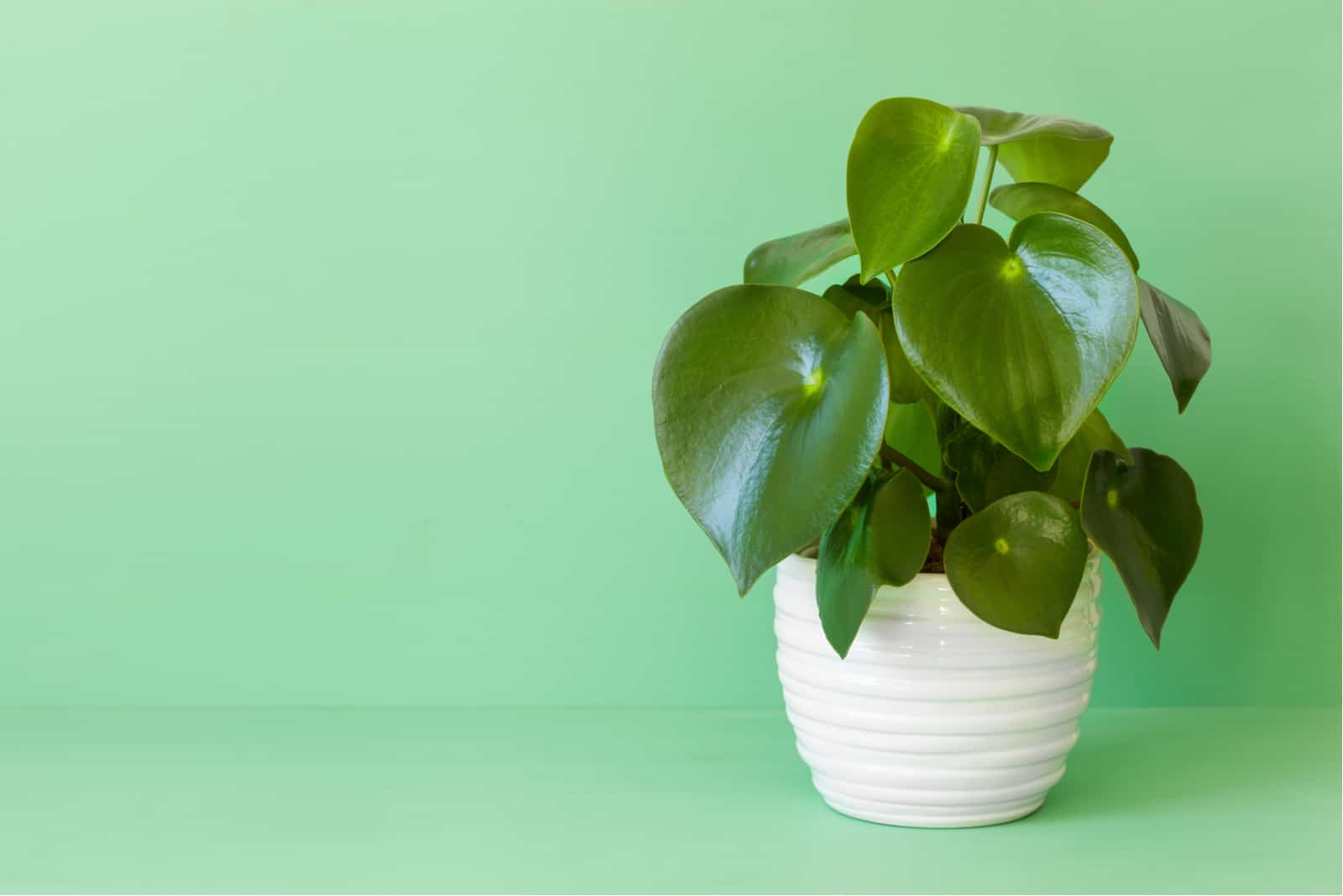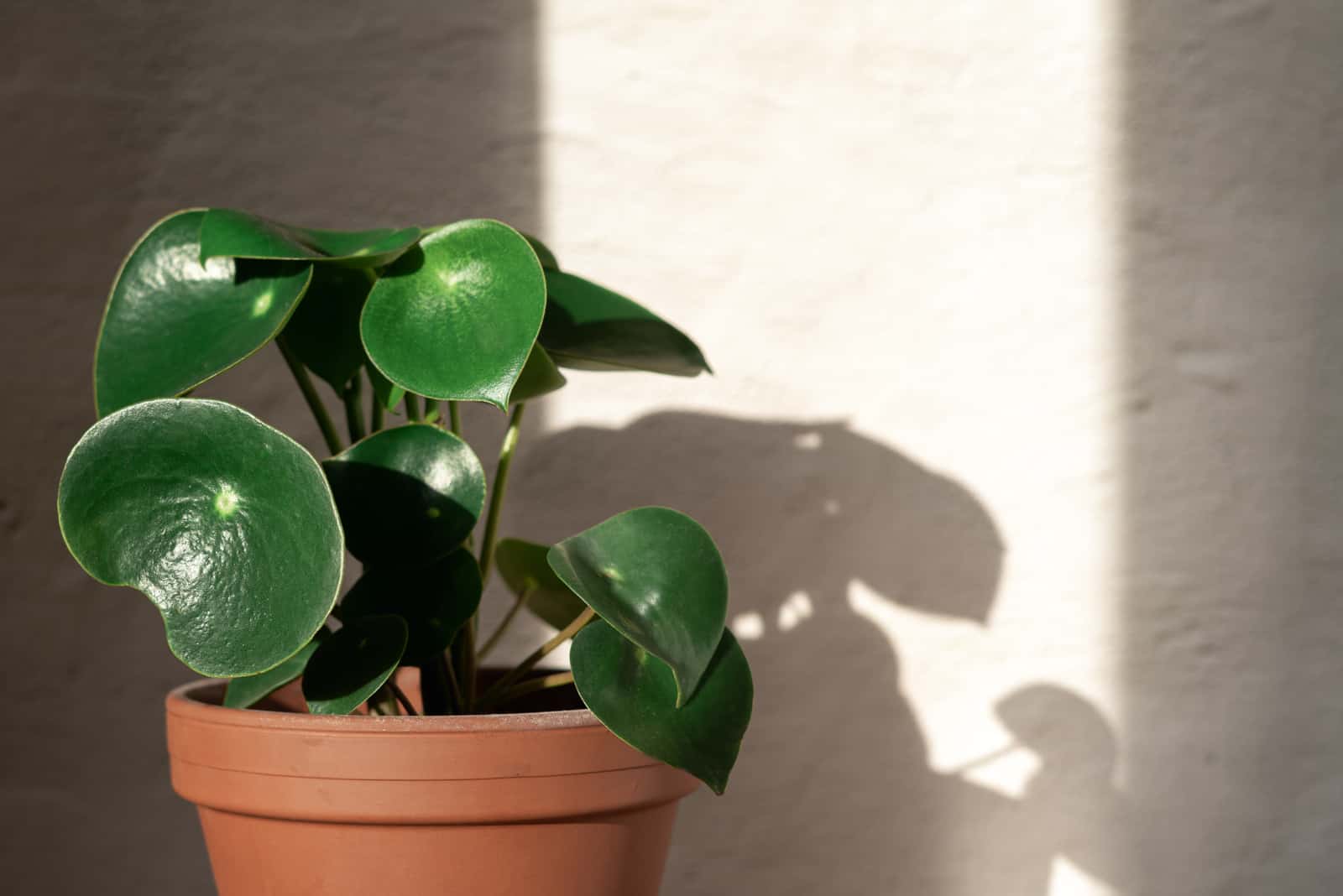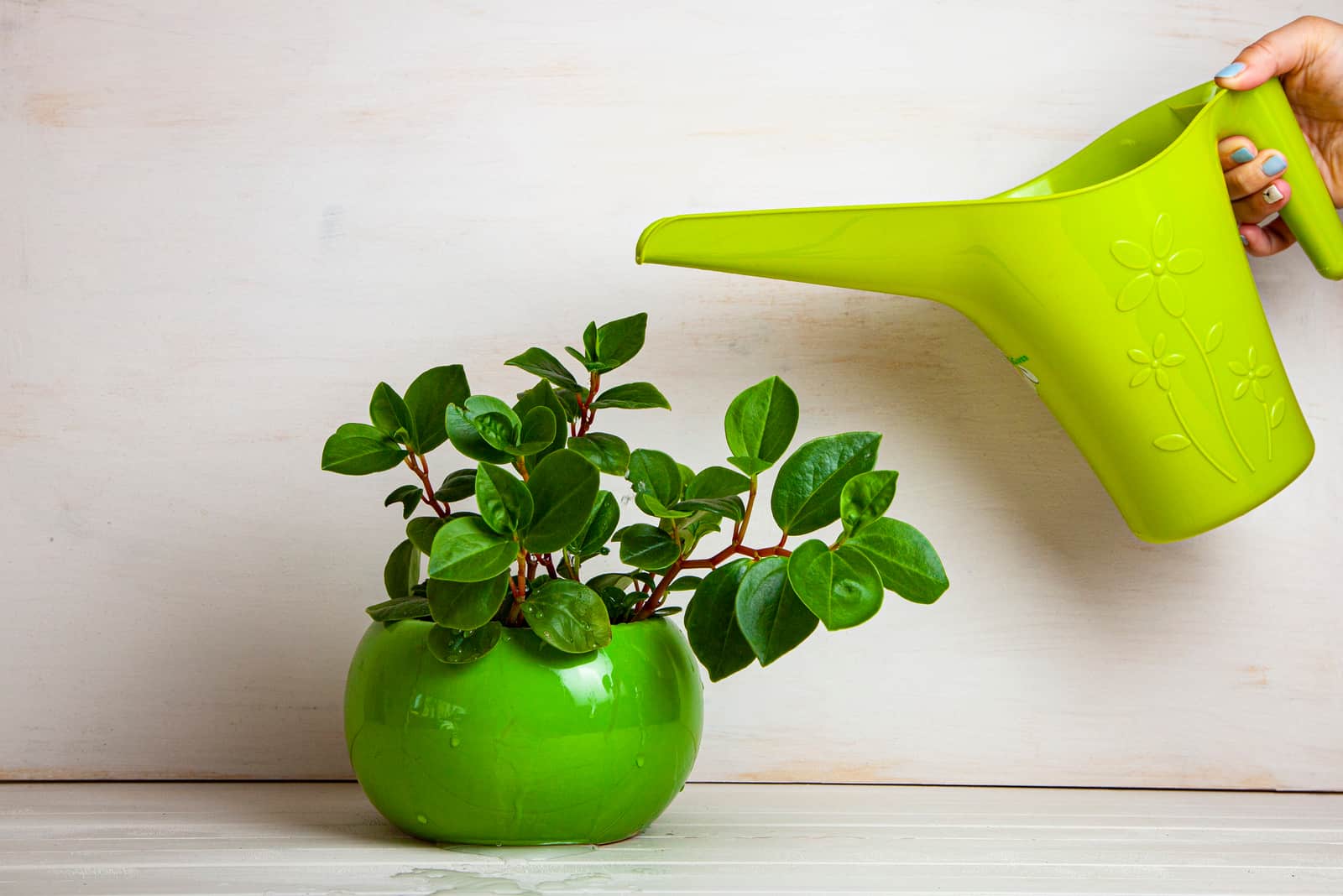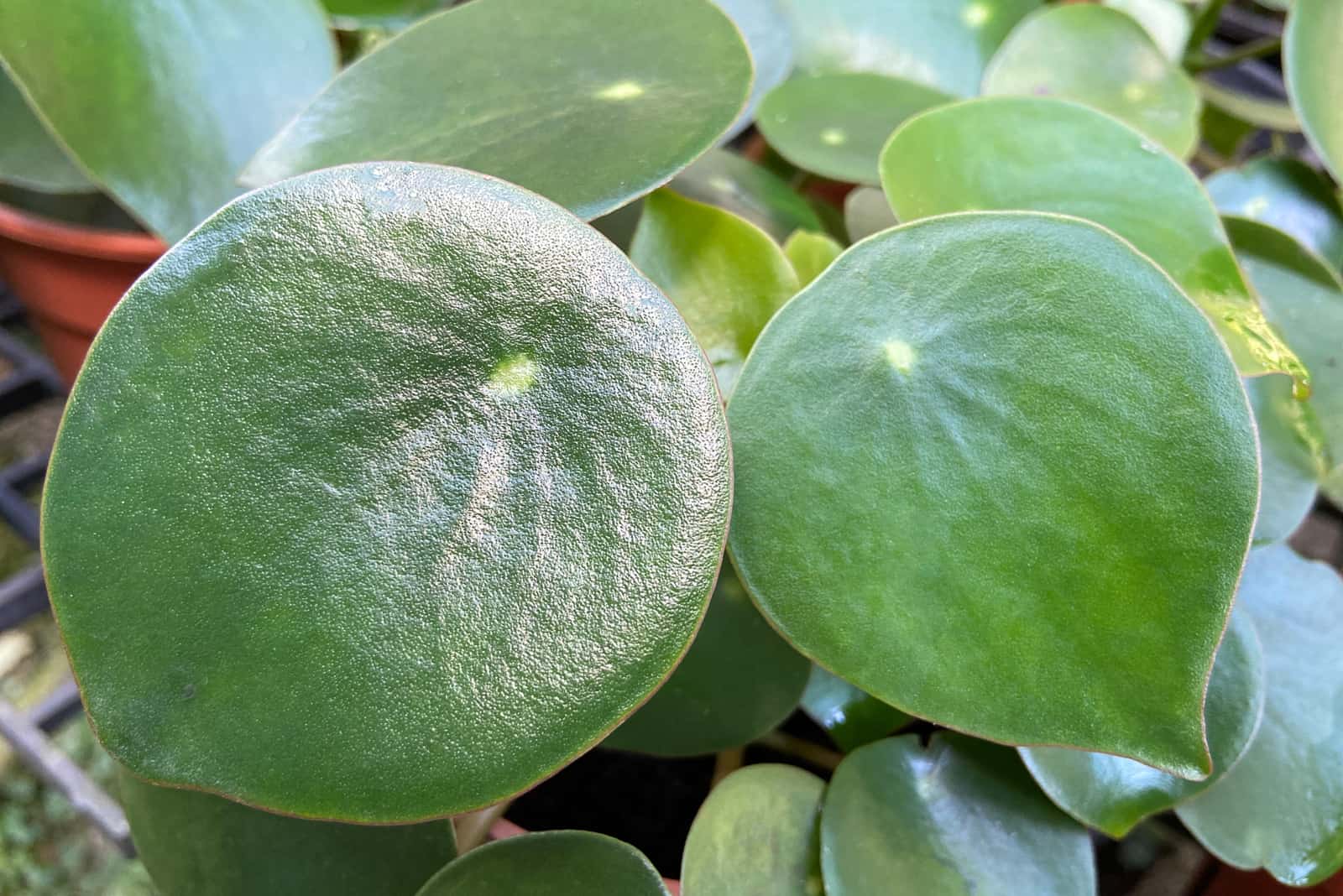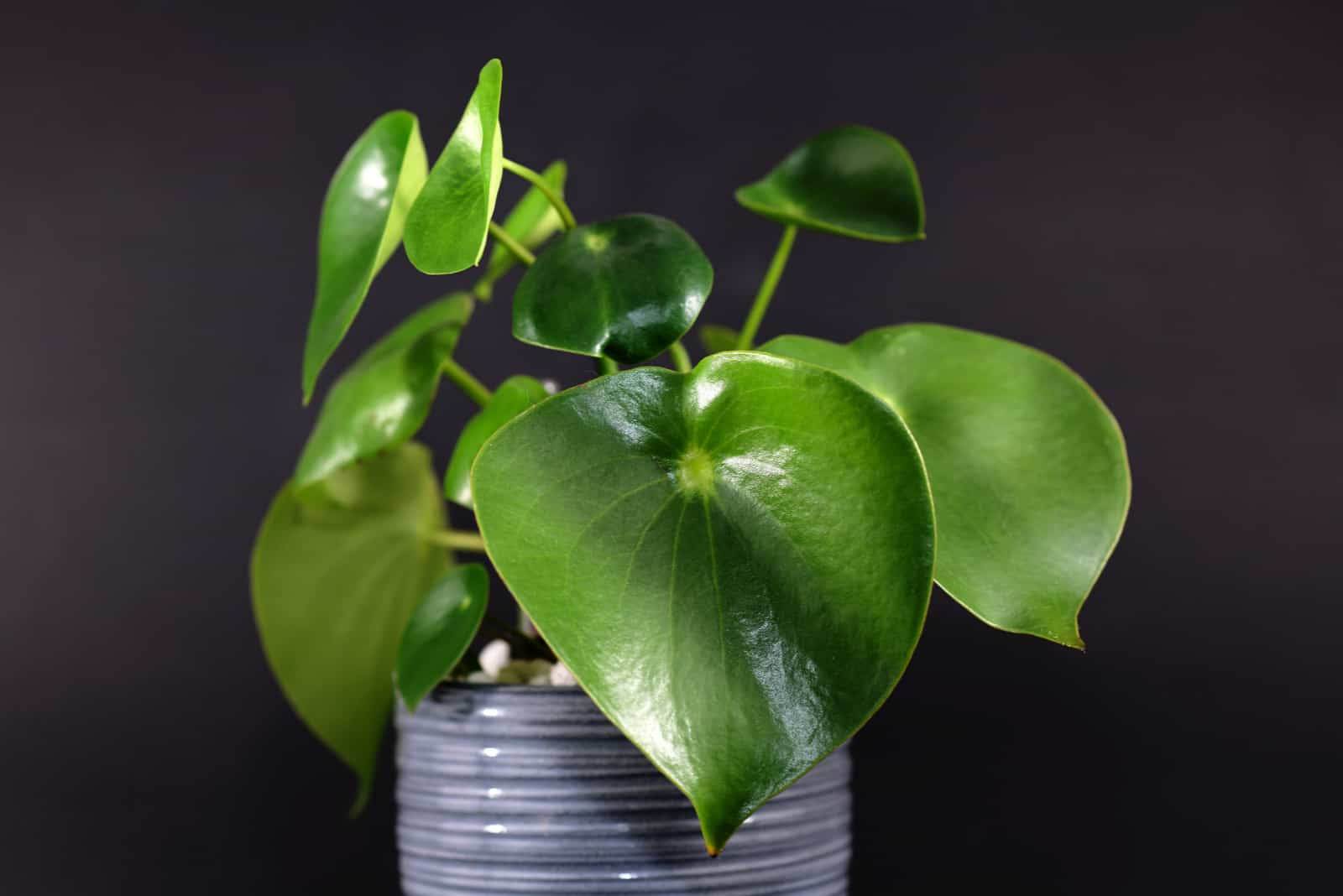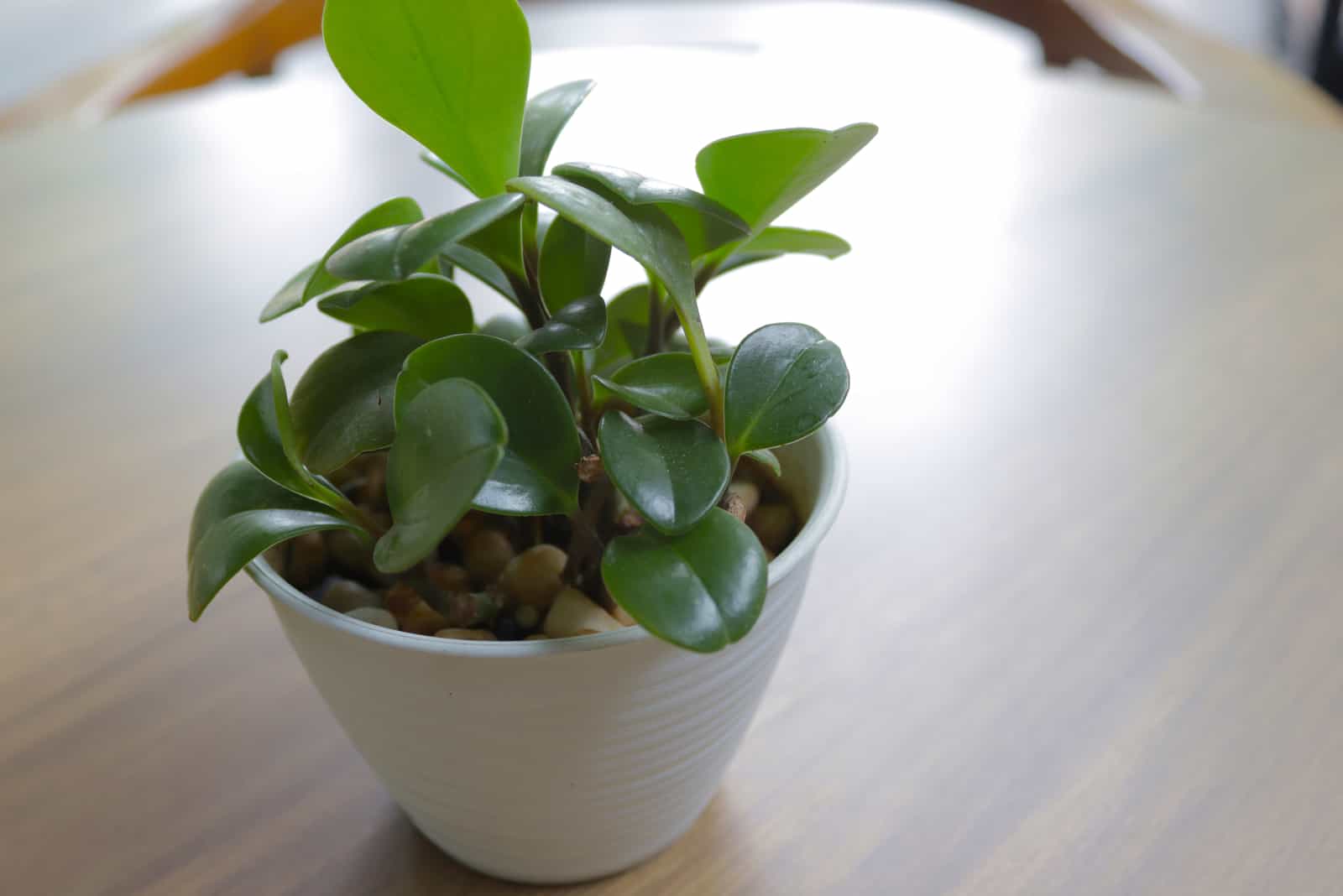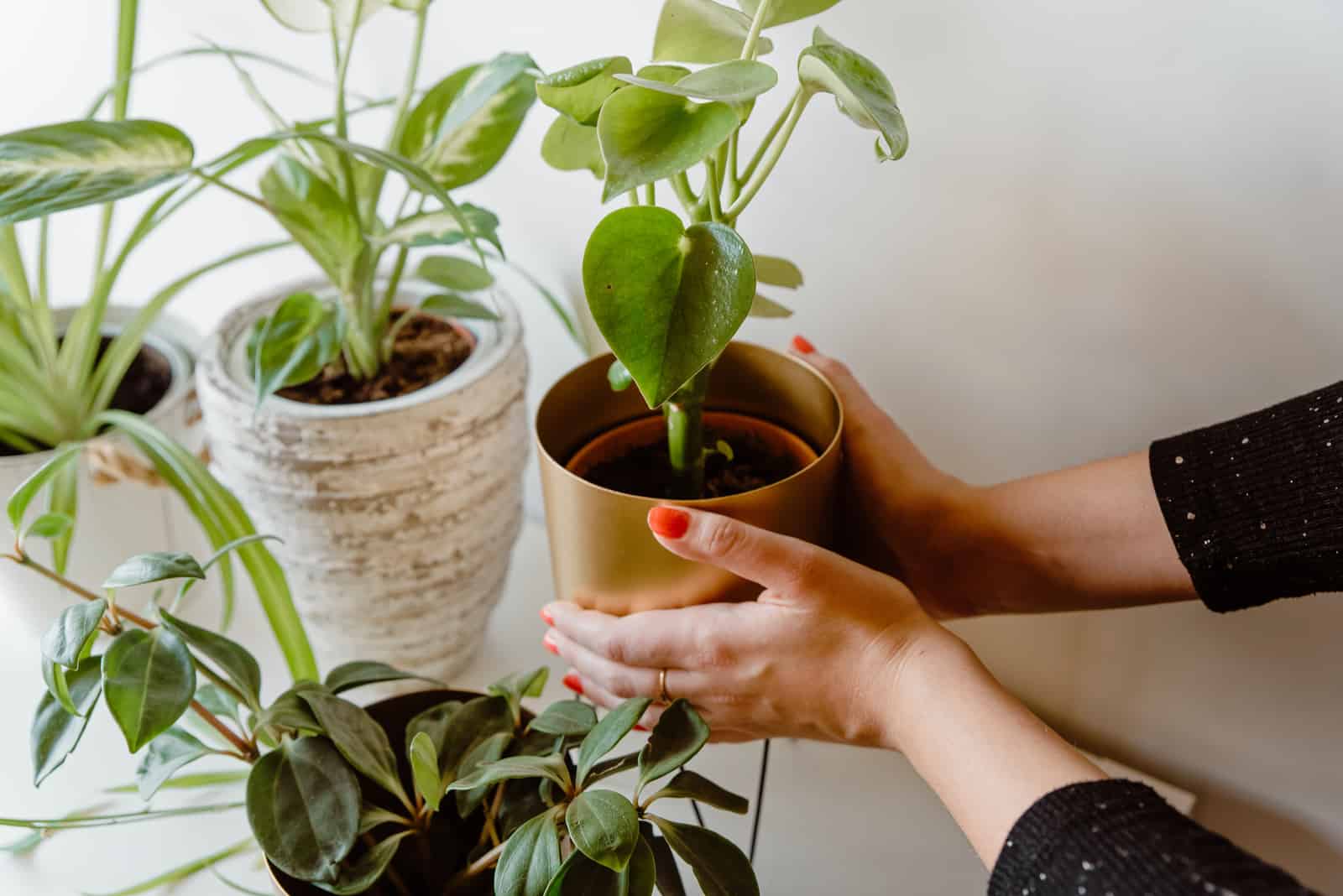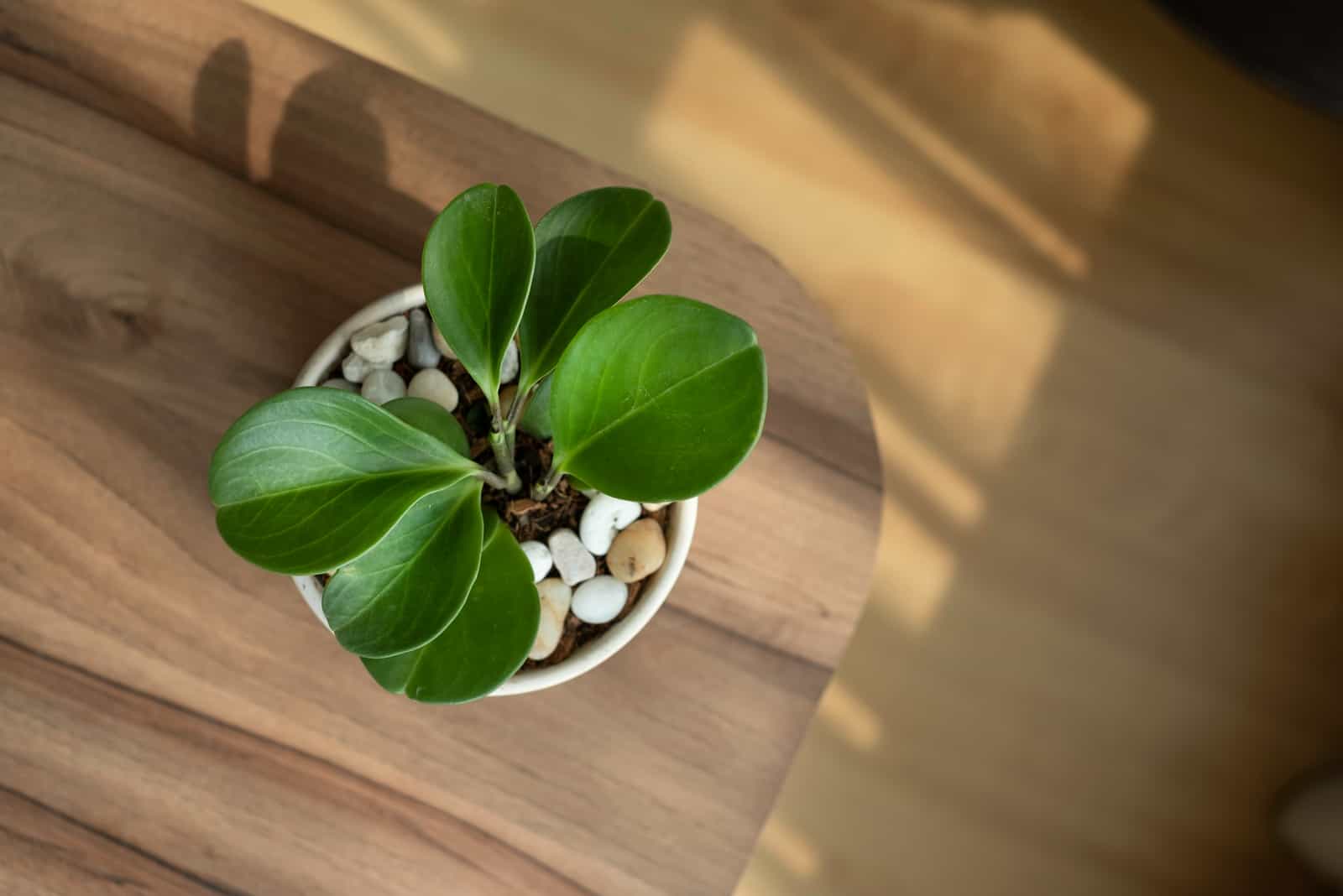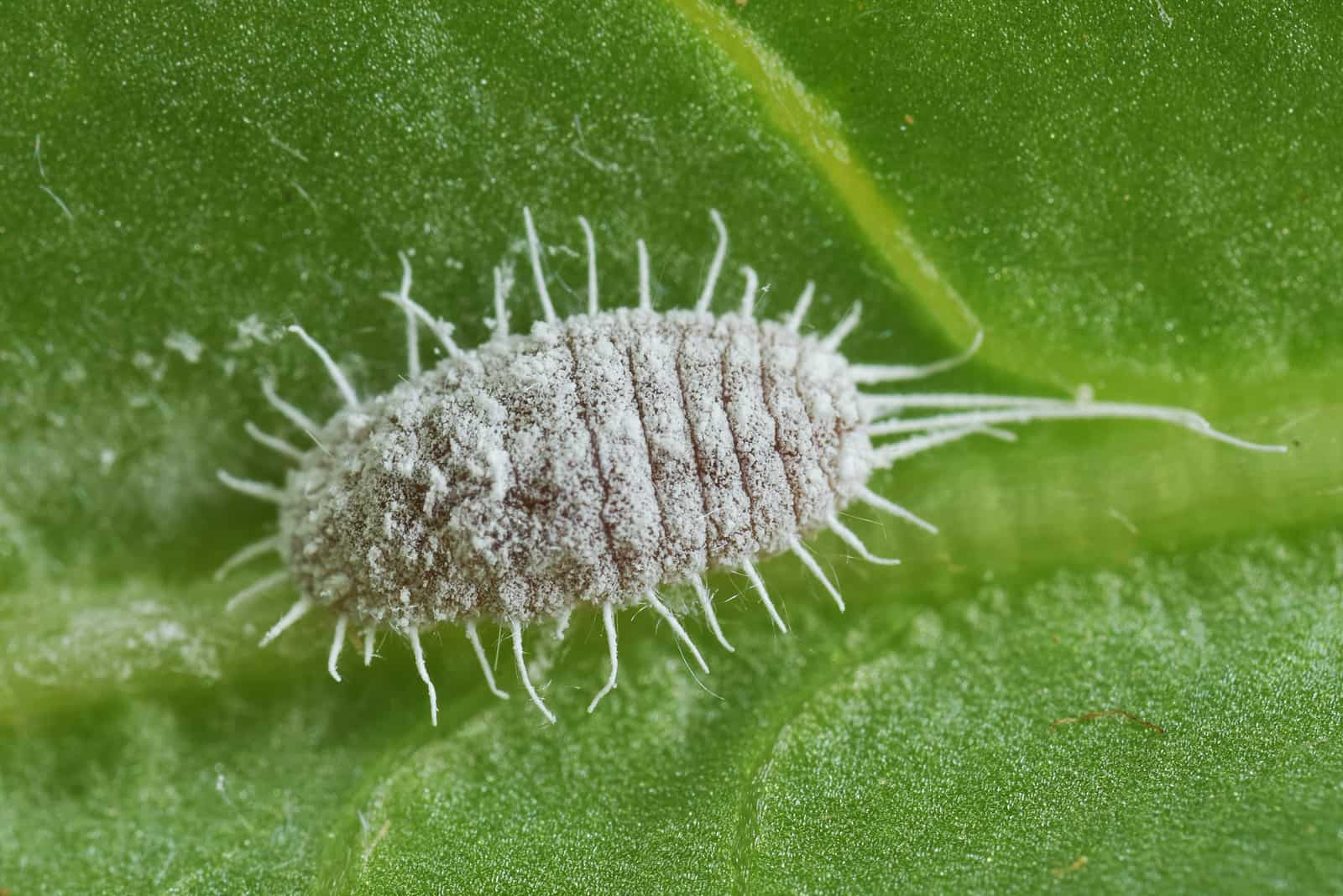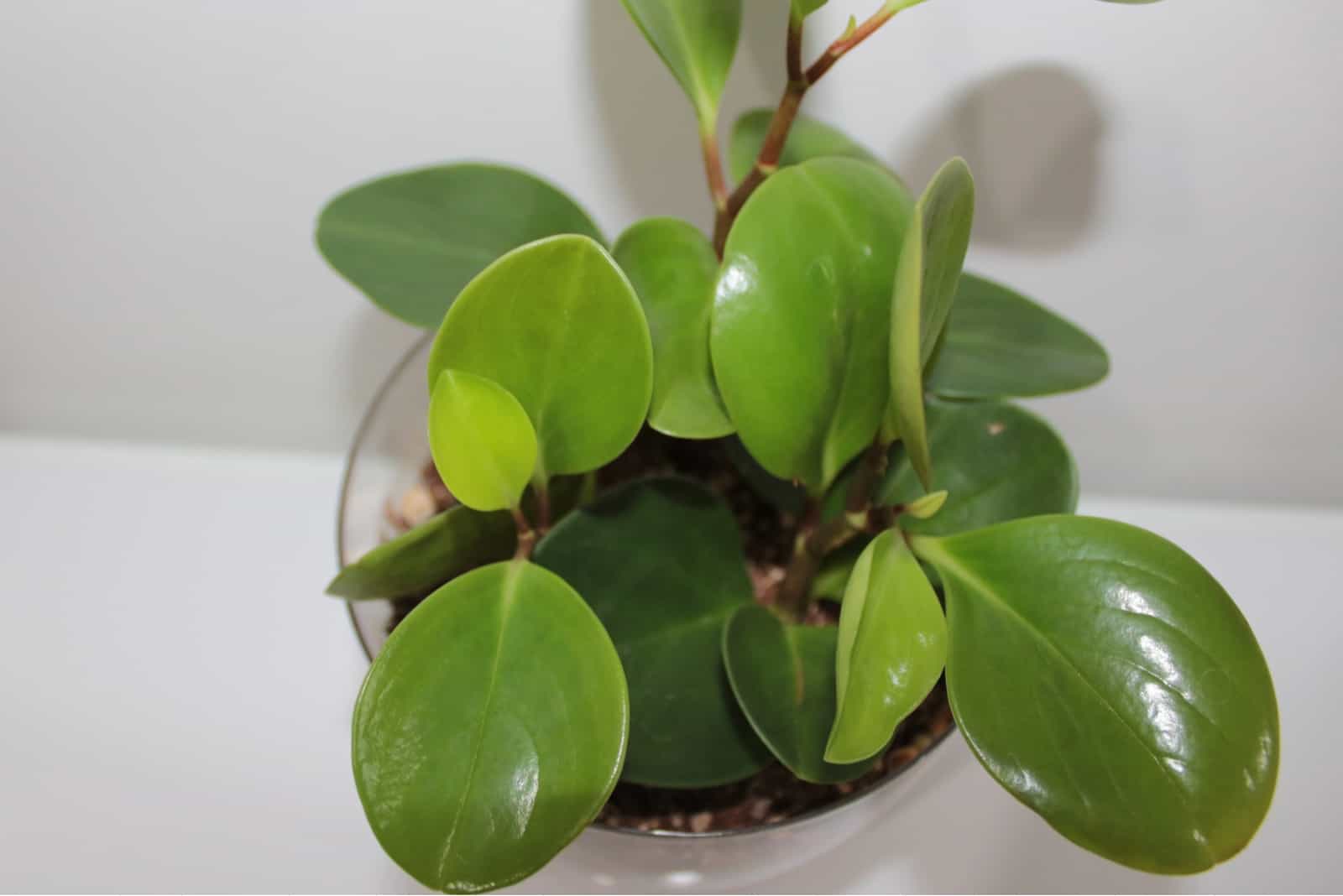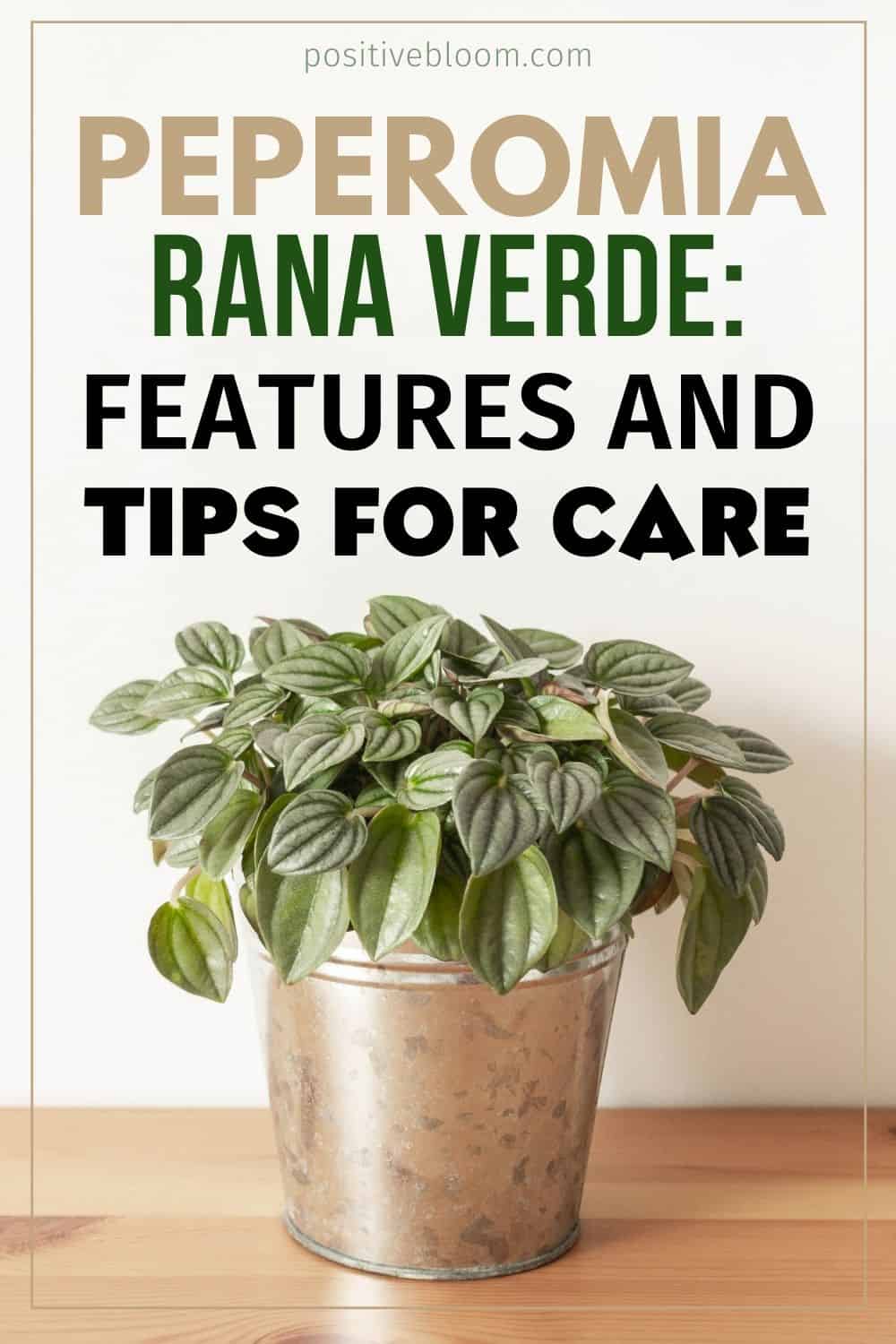I have to admit that money plants have never really crossed my mind when it comes to home decor, especially as I traditionally prefer succulents like Blue Chalksticks and Blue Burritos.
However, when I saw the cascading beauty of the Peperomia Rana Verde, I knew I simply had to have one! Its leaves simply enchanted me, so now I am a proud owner of my very own rippled peperomia.
In this article, you will learn some awesome tips and tricks for taking good care of this wonderful money plant, so read on to discover everything you need to know and more!
But first, let’s start with some general info:
[table id=6 /]Peperomia Rana Verde Care
The Peperomia Rana Verde plant is also known by its common names: Chinese rubber plant, Rippled Chinese money plant, and rippled peperomia.
An awesome thing about this plant is that it is low maintenance, so if you have a busy schedule you can take a few days off watering it and it should be just fine.
However, it is semi-succulent and partly epiphyte, so you will have to pay a little more attention to this plant than your every-day succulents.
But if you follow the Peperomia care guide provided below, you can rest assured that your money plant will be around for many years to come.
Light
Peperomia Rana Verde adores partial shade, but if you are plant-crazy and want to do everything just right to provide maximum care for your plants, here is a list of all our advice:
• The Peperomia cannot endure intense heat or direct sunlight in the middle of the day, but it’s OK to expose it to a few hours of morning light, which will improve the overall health of the plant.
• If you are like me, and you either don’t have enough time during the day to move your plants around, or you simply forget, here is an invaluable piece of advice: provide the plant with enough bright indirect light or find a heat lamp for your plants that fits your plants needs, and you will quickly see the benefits.
It’s also important to remember that you can always move it near a west or south-facing window, this is because when you give your plant what it needs, it will be able to give you what you want in return – a nicely decorated living space or a peaceful atmosphere for reading.
Just avoid leaving it in direct sunlight so it doesn’t wither.
Water And Humidity
The biggest mistake that you can make with your rippled peperomia is overwatering. Remember, this plant is semi-succulent, so its water requirements are fairly low.
The best thing you can do is let the topsoil dry thoroughly before the next watering.
In summer, it is recommended that you water it two to three times a week, and in winter even less (perhaps once every couple of weeks), because its leaves start to retain water just like a real succulent.
Overwatering can cause root rot and fungal infections, and even though there are ways of fighting these, it’s best to avoid them entirely.
However, it isn’t only the roots that need water – the whole plant likes moisture.
This Chinese rubber plant can endure humid environments, but if you want to keep it as healthy as possible and ensure its growth, it is best you keep it in a moderately humid place.
If you live in drier climates, you can mimic the humidity it gets in its natural environment by spraying some water on it, or you can invest in a good humidifier and then take it from there.
Remember, you don’t have to strictly follow this advice because the peperomia rana verde is not your typical delicate flower.
Temperature
The Rippled Chinese money plant is a perfect houseplant because its temperature requirements are neither high nor low; it thrives best in moderate temperatures.
If you want to provide your peperomia rana verde with optimal health and growing conditions, you should keep your room temperature between 65 and 75 °F, or 18 to 24 °C.
Both very cold and very hot temperatures will cause the plant to wither, and in extreme cases, even result in death, so be sure to avoid them.
However, if the unpredictable happens, and your heating breaks down, you can always keep your plant warm by keeping it in indirect light with a shade cloth over it (just like in a greenhouse).
Soil And Fertilization
When it comes to choosing the perfect soil for your rippled peperomia, you should bear in mind three things: pH level, aeration, and drainage.
• The first thing you’ll need to keep an eye on when you’re at the checkout with your bag of soil, is its pH level. If it’s not neutral or only slightly acidic (pH level between 6.1 and 7.3), don’t buy it!
You have already decided you want to take care of this amazing plant, so why not do it the right way?
• Second, the soil you choose for your money plant should provide enough air and enough oxygen to your peperomia rana verde, because plants need oxygen as much as humans!
• And finally, you’ll want to make sure that the soil is well-draining. We don’t want to drown our peperomias with water, and this can be avoided by adding some extra perlite or pumice to a peat-based soil.
Furthermore, you don’t need to worry about fertilizing your money plant as it doesn’t require fertilizer, but if you want to speed up its growth there are a couple of things you can do:
• Rippled peperomias love liquid fertilizers, so be sure to find one that fits your preferences.
• You can fertilize your plant during its growing period, so two times a week in spring and once a month in the summer months should do the trick.
Time Of Flowering
If you nurture your peperomia rana verde properly, it will bloom during the summer.
If you want to find out more about the appearance and color of the peperomia’s flower, read on!
Cleaning
The Rippled Chinese money plant is a bit more needy when it comes to cleaning. Its beautiful big leaves attract dust like magnets!
So, if you want your plant to be both gorgeous and healthy, you should clean the leaves as soon as they become dusty. The dust can hinder the healthy growth of your plant, so you are not only doing cleaning chores, you’re also helping your plant grow!
The amount and frequency of cleaning Chinese rubber plants require is not something determined by the plants general needs – it depends on its location. If your plant suffers from dust infestation, you might need to clean it every day.
Propagation
The Propagation of peperomia rana verde is simple. You can use either stem cuttings or leaf cuttings.
• Propagating money plants with stem cuttings is easier. What you need to do is cut 2-3 inches (5-8 cm) off the tip of the money plant and leave two to three leaves on it. (Do not remove the leaves because this reduces the success rate).
Then, you simply fill the pot with fresh, moist soil and plant the stem in it. Leave it in bright indirect light and watch it grow!
The best advice that I got was to not fertilize the plant until it’s at least half a year old. Now, I use liquid fertilizer as soon as the sunrays of their first spring appear.
• You can also propagate this plant with leaf cuttings. You just need to prepare a moist soil and dig a 2cm deep hole in it. Then, plant your leaf and press the soil around it to keep it nice and tall.
If you follow these tips for peperomia rana verde care, your plant should be thriving in no time.
Whichever option you choose, don’t forget to give it ample time to grow.
Here is the timeline so you can document every big moment:
Week 1-2: In the first two weeks, the plant needs a lot of indirect light and room temperature. If these are lacking, chances are you will be saying goodbye to your peperomia sooner than you’d like.
Week 3-4: If, however, the first two weeks pass without any trouble, your new plant will be ready to grow in the following two weeks.
Week: 5-8: After the first month, you should be seeing the first signs of your new money plant.
Week: 9-16: And finally, in the third and fourth month after propagation, the root system will be developed and the leaves will start to appear.
We understand that visual learning is one of the best ones, so we provide you with a great video that can help you with that.
Repotting
Let me let you in on a little secret.
The Peperomia rana verde is a perfect indoor plant for people who have their hands full with work because it doesn’t need regular repotting. This is due to its small root system.
It may outgrow its first pot, but having to repot it once is better than having to repot it every year.
If you need to repot it, or if you’ve found an incredible new pot for it to live in, then you’ll be happy to hear that repotting this money plant is a piece of cake.
Just be sure you do it during the growing season, either in spring or summer, and make sure the new pot doesn’t hold water (you can buy a pot with draining holes or just use well-draining soil).
Pruning
Unlike repotting, pruning is essential when it comes to any plant, not just peperomia rana verde. It can stimulate growth and improve its shape to make it fit your living room or garden perfectly.
Cut off any overgrown branches, but be careful not to over-prune the peperomia because this will shorten it significantly.
For Those Who Want To Learn More
If you have read this far, you must be very keen to find out everything you can about peperomia rana verde.
The first interesting thing about this peperomia is that it is actually a hybrid plant between male and female cultivars of Albovittata plants. It was first crossed in the Netherlands in 2012, and since then it has reached homes all across the globe.
Its non-toxicity means it is pet friendly, so you don’t have to worry about putting it somewhere out of reach. You can just place it on a small stool or a windowsill and enjoy this evergreen plant for many seasons to come.
Foliage And Flowers
The stem of this beautiful money plant loves to branch out, and it can contain up to 16 heart-shaped leaves.
The size of the leaf is approximately 3 inches (8 cm). An interesting thing about the foliage of this money plant is that the upper side is shiny, whereas the lower side is matte.
The flowers, on the other hand, are very inconspicuous, unlike the foliage. They appear during the summer season and are orange.
They are smaller than an inch (2,5 cm) and are scentless, which is why you can easily miss them.
Common Pests And Diseases
The Peperomia Rana Verde is unfortunately not pest resistant. Many insects, such as spider mites, fungus gnats, and mealybugs, often cause problems with this plant.
Fungus gnats have the potential to become very dangerous if they develop larvae because they can do irreversible damage to the root system. However, you only need to sprinkle some cinnamon powder on the topsoil to keep your plant safe.
When it comes to mealybugs and spider mites, you can just pick them off by hand or use alcohol and neem oil.
If the bug infestation is so bad that nothing helps, you can always use pesticides and insecticides as a last resort.
Peperomia is also subject to the fungal infection pythium. This can even kill the plant, as it attacks root systems and stems.
Pythium causes black spots on your plant, causing it to start curling and drooping.
The main cause of this fungal infection is drowning the plant in water, which is why well-draining soil is so important.
If your plant gets infected with pythium, there is not much you can do. The best thing would be to repot it with well-drained soil and hope for the best.
More Information About Peperomias
Genus Peperomia, also known by its common name, the radiator plant, is a member of the Piperaceae family. It has more than 1000 species, many of which are epiphytes that like tropical and sub-tropical environments.
Members of this genus come in all shapes and sizes, but they have some common features: fleshy, green leaves 1-4 inches (2,5-10 cm) in size, and heart-shaped, oval, or spiked orange flowers that are inconspicuous.
They are often mistaken for succulents due to their fleshy leaves, but they should not be confused with them because Peperomia plants only act as succulents during winter, and their water and humidity requirements are different.
There are many colorful peperomias that can break the green monotony of Rana Verde, and one of our favorites is peperomia Abricos.
You Asked Us
In the following section, you will find the answers to some of your most frequently asked questions.
Are Peperomia Rana Verde rare?
No, Peperomia Rana Verde are not rare. You can order them online and have one in your house in no time.
What are some problems with Peperomia Rana Verde?
The main problem with Peperomia Rana Verde is overwatering. This may lead to other problems like root rot and fungal infections. Avoid overwatering and you’ll avoid the other problems.
Peperomia Rana Verde also experience problems with pests, but if you follow the instructions of how to get rid of these they are easily solved.
Wrapping Up
The Peperomia Rana Verde is a great example of a perfect houseplant: it doesn’t need to be watered all the time, you don’t have to move it from place to place to provide it with perfect light, it loves the same temperature as you, and you do not have to repot it every few months.
All in all, this plant is so undemanding you could even forget you have it and it still won’t wither and die.
All it needs is a friend, so if you’re not always around you can always find a tall philodendron or an adorable agava to keep it company.
Until next time!
Like this post? Please share or pin it for later!

